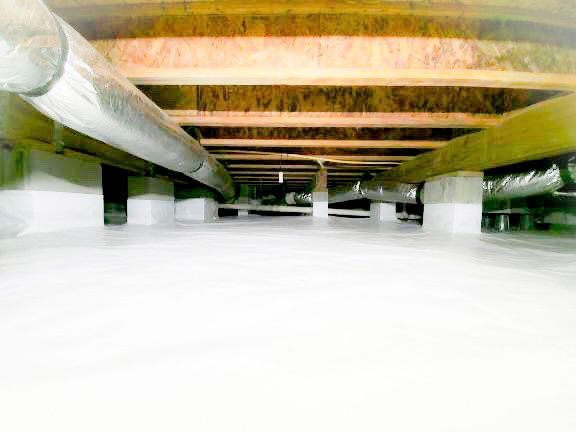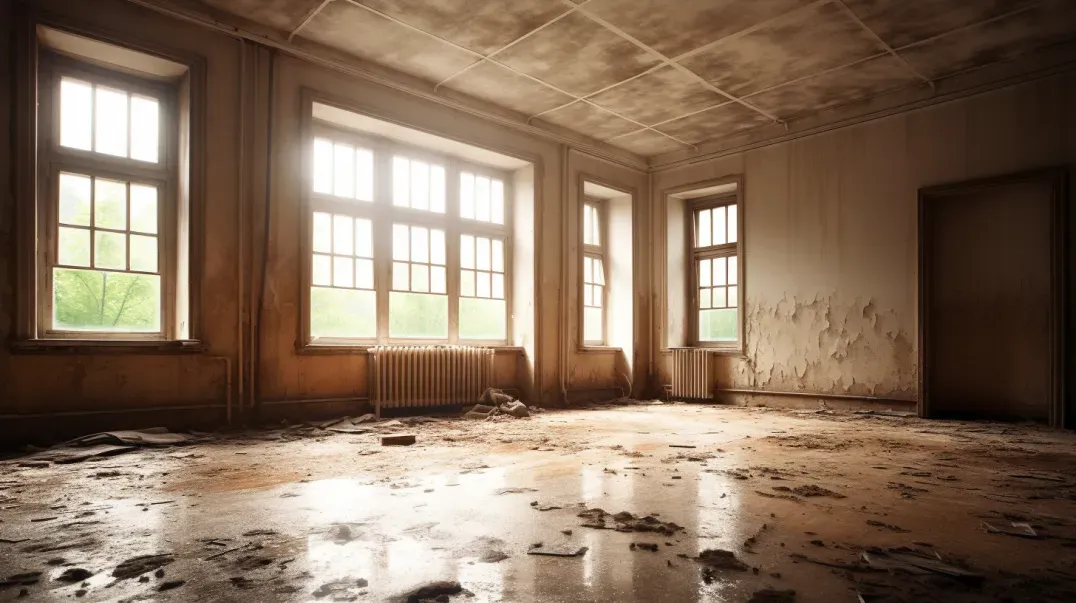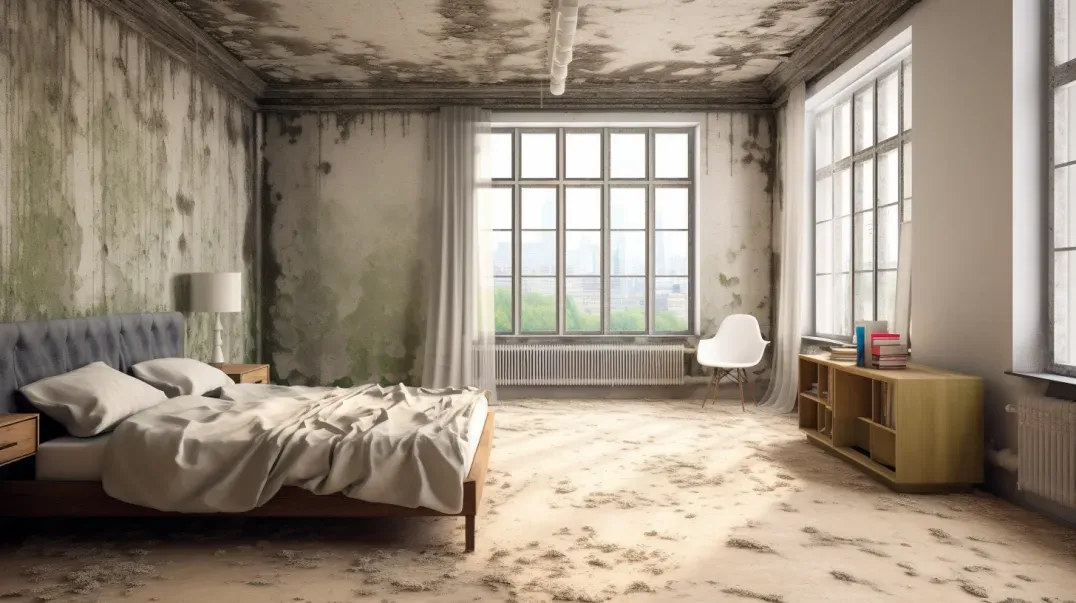Mold Growth Timeline in Crawl Spaces
Welcome to our in-depth exploration of one of the most common yet challenging issues faced by homeowners: mold growth in crawl spaces. This hidden area beneath your home, often out of sight and mind, can unfortunately become a breeding ground for mold under the right conditions. Understanding these conditions and the timeline of mold development is crucial for effective prevention and treatment.
The Perfect Conditions for Mold Growth
Crawl spaces, with their typical characteristics of darkness, moisture, and limited airflow, create an ideal environment for mold to thrive. Factors such as leaks, high humidity, and poor ventilation contribute to creating a damp environment conducive to mold growth.
Why the Timeline Matters:
- Early Stages: Recognizing the early signs of mold growth, such as musty odors or visible mildew, is critical in preventing its spread.
- Progression: Mold can grow rapidly under the right conditions, often becoming visible within 24 to 48 hours of moisture exposure.
- Long-Term Effects: Over time, unchecked mold growth can lead to significant structural damage to your home and health issues for its inhabitants.
The Importance of Timely Action
Understanding the timeline of mold growth empowers homeowners to take timely and effective action. From initial prevention strategies, such as controlling humidity and ensuring proper ventilation, to early detection and removal, each step is time-sensitive. The quicker the response to the first signs of mold, the easier and more effective the treatment and prevention strategies will be.
Join us as we delve into the specifics of mold growth in crawl spaces, the conditions that foster it, and the crucial timeline for preventing and addressing this common home issue. Our goal is to equip you with the knowledge and tools needed to protect your home and health from the risks of mold.
The Basics of Mold and Its Growth Conditions
Mold is a common yet often misunderstood organism that plays a crucial role in the environment but can pose challenges when it grows in our homes, particularly in crawl spaces. Understanding what mold is and the conditions that promote its growth is essential for effective home maintenance.
What is Mold?
Mold is a type of fungus that exists as part of the natural environment. It plays a vital role in breaking down organic matter, contributing to the ecological balance.
Biological Nature of Mold:
- Composition: Mold consists of tiny spores that are invisible to the naked eye and can easily spread through the air.
- Reproduction: Mold reproduces by releasing these spores, especially when disturbed, which then settle in new locations where they can grow.
- Diversity: There are thousands of mold species, each adapted to different environmental conditions. Some are harmless, while others can be toxic.
Ideal Conditions for Mold Growth in Crawl Spaces
Crawl spaces provide several conditions that are ideal for mold growth. Understanding these can help in preventing and controlling mold infestations.
Moisture:
The primary factor for mold growth is moisture. Crawl spaces often have higher humidity levels or may experience water leakage or flooding, creating a damp environment conducive to mold.
Temperature:
Most molds thrive in temperatures that are comfortable for humans, typically between 60 and 80 degrees Fahrenheit. Crawl spaces, being enclosed, often maintain these temperatures.
Organic Material:
Mold feeds on organic material. In crawl spaces, this includes wood, insulation, paper products, and other building materials. When these materials become damp or wet, they provide a food source for mold.
Limited Ventilation:
Poor ventilation in crawl spaces leads to stagnant air, which helps maintain high humidity levels and prevents the drying out of moist materials, further encouraging mold growth.
By understanding the nature of mold and the conditions under which it thrives, particularly in crawl spaces, homeowners can take proactive steps to mitigate the risk of mold growth and maintain a healthy living environment.
Early Stages of Mold Growth
Understanding the early stages of mold growth is crucial in preventing its spread and mitigating potential damage, especially in crawl spaces where conditions are often ideal for mold development. This section explores the initial settlement of mold spores and the first visible signs of mold growth.
Initial Mold Spore Settlement
Mold begins its life cycle as spores, which are tiny, lightweight, and easily airborne, allowing them to settle in various environments, including crawl spaces.
How and Where Mold Spores Settle:
- Airborne Transmission: Mold spores travel through the air and can enter crawl spaces through open vents, cracks, or even on clothing and pets.
- Ideal Settlement Conditions: Spores tend to settle in damp, dark, and undisturbed areas. In crawl spaces, this often includes surfaces such as wood beams, insulation, or stored items, especially if they are organic or porous.
- Moisture Dependency: For spores to start growing into mold, they require moisture. This can come from high humidity, condensation, leaks, or flooding in the crawl space.
Visible Signs of Early Mold Growth
Recognizing the early signs of mold growth can help in addressing the issue before it becomes a larger problem.
First Indicators of Mold Growth:
- Discoloration: One of the first visible signs is discoloration on surfaces. This may appear as spots or patches of white, black, green, or other colors.
- Musty Odor: A musty, earthy smell is often an early indicator of mold growth, even before it becomes visible.
- Texture Changes: Mold in its early stages may look like a slight fuzziness on surfaces, particularly on organic materials like wood or fabric.
Importance of Early Detection:
- Detecting these early signs is key to preventing the spread of mold. Early-stage mold is generally easier to clean and manage.
- Regular inspections of crawl spaces, particularly in areas prone to moisture, are essential in catching mold growth early.
Understanding the early stages of mold growth, from spore settlement to the first visible signs, is a critical step in effective mold management. This knowledge empowers homeowners to take timely action, maintaining the health and integrity of their crawl spaces and homes.
Mold Proliferation and Spread
Mold proliferation in homes, particularly in crawl spaces, can be a rapid and concerning process. Understanding the factors that contribute to this rapid growth and recognizing the signs of advanced mold stages are key to effective mold management and remediation.
Factors Influencing Rapid Mold Growth
Several factors can accelerate mold growth, leading to its rapid proliferation and spread throughout crawl spaces and potentially other areas of the home.
Key Contributing Factors:
- Persistent Moisture: Continuous exposure to moisture, whether from leaks, high humidity, or condensation, is the primary driver of mold growth.
- Suitable Temperatures: Mold typically thrives in temperatures between 60 and 80 degrees Fahrenheit, which are common in many homes.
- Organic Food Sources: Mold feeds on organic materials found in crawl spaces, such as wood, paper, and certain types of insulation.
- Poor Ventilation: Limited airflow in crawl spaces can create stagnant, humid conditions ideal for mold growth.
- Previous Mold Spores: Existing mold spores can lay dormant and rapidly activate when conditions become favorable.
Recognizing Advanced Mold Growth
As mold growth progresses, it becomes more apparent and potentially more hazardous. Recognizing these advanced stages is crucial for timely intervention.
Signs of Advanced Mold Growth:
- Large Colonies: Visible large patches or colonies of mold, often with dense concentrations, indicate advanced growth.
- Strong Musty Odor: A pervasive, strong musty smell suggests a significant mold presence.
- Structural Damage: Signs of decay or damage to wooden structures in the crawl space can indicate long-term mold growth.
- Health Symptoms: Increased allergic reactions or respiratory issues among household members can be a sign of widespread mold.
Addressing Advanced Mold Growth:
- In cases of advanced mold growth, professional remediation is often necessary. Experts can safely and effectively remove extensive mold infestations.
- After remediation, addressing the underlying causes of mold growth is essential to prevent recurrence.
Understanding the factors that contribute to mold proliferation and being able to recognize the signs of advanced growth are critical in maintaining a healthy home environment. Prompt action and professional intervention are often required to effectively manage and resolve extensive mold issues.
Timeline of Mold Growth in Crawl Spaces
Understanding the timeline of mold growth in crawl spaces is crucial for homeowners to effectively prevent and address this common issue. Mold growth can vary in speed and intensity, depending on several factors. This section provides a detailed look at the progression from initial spore settlement to full mold growth, along with the factors that influence this timeline.
From Spores to Full Growth
Mold growth begins with spore settlement and progresses through several stages, eventually leading to full growth if conditions are favorable.
Initial Spore Settlement:
Mold spores are always present in the air and can settle in a crawl space at any time. However, without the right conditions, they remain dormant.
Germination Stage (24-48 hours):
With sufficient moisture, spores begin to germinate within 24 to 48 hours. You might start noticing a musty smell, which is one of the first signs of mold growth.
Hyphal Growth (1-12 days):
Hyphae, which are tiny filaments, start to grow from the germinated spores. This stage can last from a day to about two weeks, depending on conditions.
Mycelium Development (1-3 weeks):
The hyphae develop into mycelium, a more visible and structured mold growth. This stage is when mold becomes visible as patches on surfaces.
Full Mold Growth (3 weeks and beyond):
After about three weeks, mold reaches full growth, forming large colonies that can spread across surfaces and release new spores into the air.
Factors Affecting the Growth Timeline
Various environmental factors can either accelerate or decelerate the mold growth process in crawl spaces.
Moisture Levels:
The most significant factor is moisture. High humidity or water presence can speed up mold growth dramatically.
Temperature:
Mold grows best in temperatures between 60 and 80 degrees Fahrenheit. Warmer conditions within this range can accelerate growth.
Air Circulation:
Poor ventilation in crawl spaces can lead to stagnant, moist air, ideal for mold growth. Good air circulation can slow down the growth process.
Type of Surface:
Organic, porous materials like wood and paper facilitate faster mold growth compared to non-porous surfaces.
Light Exposure:
While mold can grow in light and dark conditions, darkness in crawl spaces often accelerates its growth.
Understanding the timeline of mold growth and the factors that affect it is essential for homeowners to take timely action in preventing and controlling mold in crawl spaces. Regular inspections and maintenance, along with controlling environmental factors, are key strategies in managing mold growth.
Health and Structural Implications of Prolonged Mold Growth
Prolonged mold growth in homes and buildings is not just an aesthetic issue but a serious concern that can have significant health and structural implications. Understanding these risks is crucial for homeowners and property managers to take appropriate action.
Health Risks Associated with Mold
Long-term exposure to mold can lead to various health problems, affecting residents' well-being.
Respiratory Issues:
Prolonged exposure to mold spores can cause respiratory issues such as asthma, chronic coughing, wheezing, and in severe cases, lung infections.
Allergic Reactions:
Many individuals are allergic to mold, which can lead to symptoms like sneezing, runny nose, red eyes, and skin rash. Long-term exposure can exacerbate these allergic reactions.
Immune System Impact:
Mold exposure can impact the immune system, particularly in individuals with compromised immunity, leading to increased susceptibility to other infections and illnesses.
Toxic Effects:
Certain types of mold produce mycotoxins that can be harmful to humans, especially when inhaled over a prolonged period. These toxins can lead to neurological problems and other serious health conditions.
Impact on Structural Integrity
Long-term mold growth can also have detrimental effects on the structural integrity of a property.
Wood Decay:
Mold feeds on organic materials like wood, leading to its decay. Over time, this can weaken the structural components of a building, such as beams and joists.
Material Deterioration:
Apart from wood, mold can affect other materials like drywall and insulation, causing them to deteriorate and potentially leading to costly repairs.
Compromised Structural Safety:
Prolonged mold growth can lead to significant damage, compromising the safety of the building. In extreme cases, it may necessitate extensive renovations or even complete rebuilding.
Reduced Property Value:
Properties with long-term mold issues often see a reduction in their market value, as mold is a significant deterrent for potential buyers or renters.
Understanding the health and structural risks associated with prolonged mold growth underscores the importance of timely mold detection and remediation. Regular inspections, proper ventilation, and moisture control are key strategies in preventing mold-related problems.
FAQs
Contact Lowcountry Crawlspaces Today!
Lowcountry Crawlspaces will do everything we can to ensure your experience with us is excellent.
Request A FREE Estimate
CHECKOUT RECENT POST



Schedule Your FREE Crawl Space Evaluation Today
There Is No Crawl Space Job We Can’t Fix!




